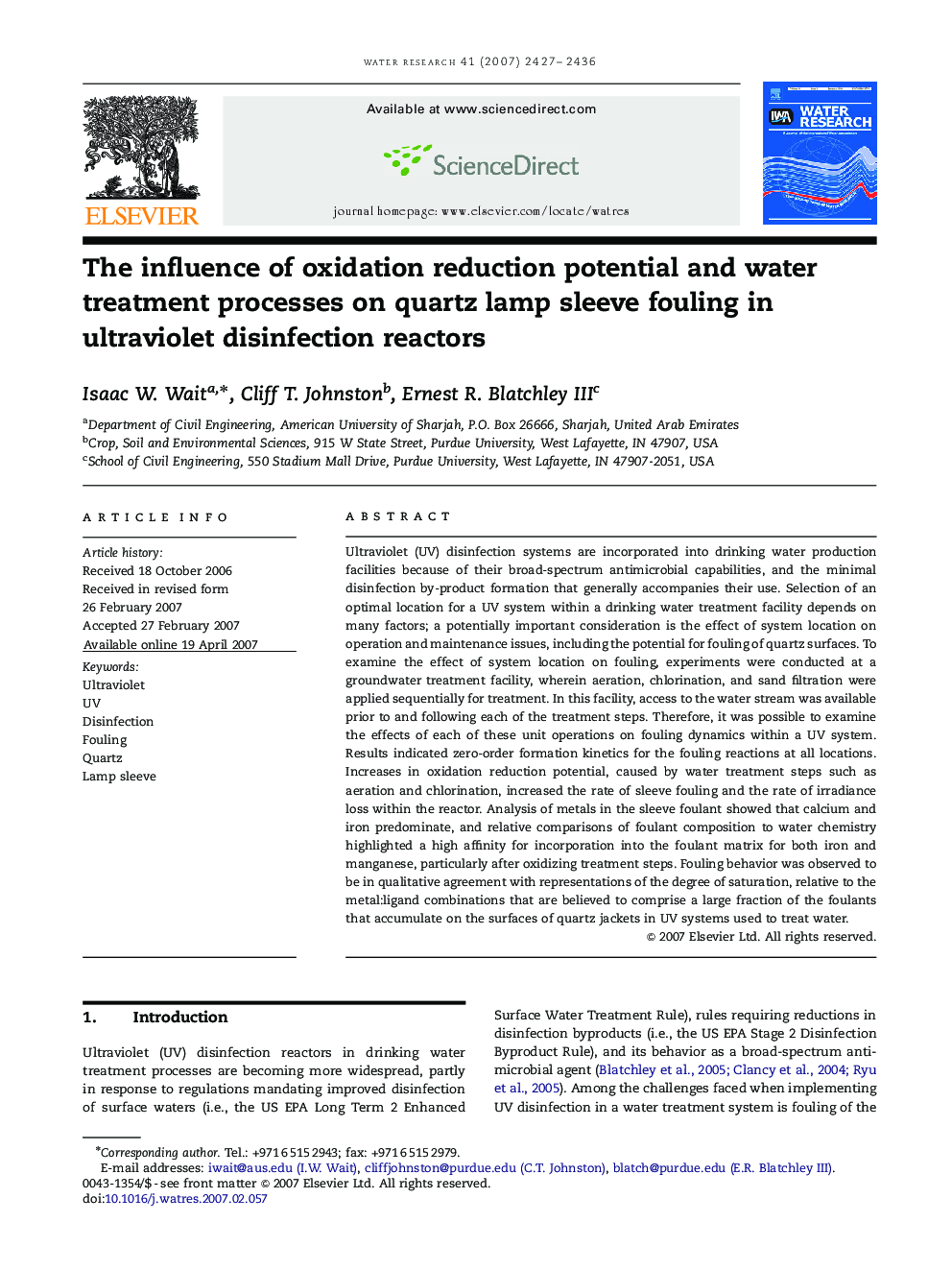| کد مقاله | کد نشریه | سال انتشار | مقاله انگلیسی | نسخه تمام متن |
|---|---|---|---|---|
| 4485445 | 1316952 | 2007 | 10 صفحه PDF | دانلود رایگان |

Ultraviolet (UV) disinfection systems are incorporated into drinking water production facilities because of their broad-spectrum antimicrobial capabilities, and the minimal disinfection by-product formation that generally accompanies their use. Selection of an optimal location for a UV system within a drinking water treatment facility depends on many factors; a potentially important consideration is the effect of system location on operation and maintenance issues, including the potential for fouling of quartz surfaces. To examine the effect of system location on fouling, experiments were conducted at a groundwater treatment facility, wherein aeration, chlorination, and sand filtration were applied sequentially for treatment. In this facility, access to the water stream was available prior to and following each of the treatment steps. Therefore, it was possible to examine the effects of each of these unit operations on fouling dynamics within a UV system. Results indicated zero-order formation kinetics for the fouling reactions at all locations. Increases in oxidation reduction potential, caused by water treatment steps such as aeration and chlorination, increased the rate of sleeve fouling and the rate of irradiance loss within the reactor. Analysis of metals in the sleeve foulant showed that calcium and iron predominate, and relative comparisons of foulant composition to water chemistry highlighted a high affinity for incorporation into the foulant matrix for both iron and manganese, particularly after oxidizing treatment steps. Fouling behavior was observed to be in qualitative agreement with representations of the degree of saturation, relative to the metal:ligand combinations that are believed to comprise a large fraction of the foulants that accumulate on the surfaces of quartz jackets in UV systems used to treat water.
Journal: Water Research - Volume 41, Issue 11, June 2007, Pages 2427–2436